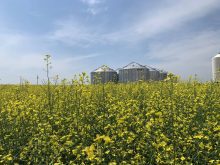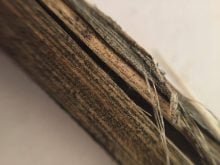Through my @CanolaWatch Twitter handle, I put up a poll in January with the question, “Canola growers, how many different hybrids will you grow this year?” The options were one, two, three or four-plus. “Two” was the most common answer, with 35.7 per cent. “One” was second, with 27.9 per cent.
When I shared the results, my colleague Clint Jurke, agronomy director for the Canola Council of Canada (CCC), said, “We have some work to do.” That’s because one of the CCC agronomy priorities is to encourage farmers to make seed decisions based on the best traits for each field. For most farms, that probably means growing more than two different hybrids each year.
Read Also

Claas brings 1000 Series SP forage harvesters to Canada
In mid-August, Claas unveiled its new line of Jaguar forage harvesters at an event in Visalia, California, deep in the heart of that state’s dairy region.
At CCC’s Canola Watch, we like quizzes as a way to share agronomy knowledge. Here are four quiz questions to test your knowledge on canola seed traits. Answers are provided at the end of the article.
Question 1. Choosing cultivars with different days to maturity can spread out the harvest window. One strategy to ensure a noticeable difference in harvest date is to seed earlier-maturing cultivars __________.
A. At a higher seeding rate
B. After seeding later-maturing cultivars
C. Before seeding later-maturing cultivars
Question 2. If blackleg severity is increasing to the point where yield loss is likely, a grower will want to switch to a cultivar with a different major gene for blackleg resistance. When it comes to major resistance gene selection, what is the foundation for an informed decision?
A. A blackleg race identification test
B. Stem clippings to identify the presence of blackleg
C. If the field had a cultivar with resistance group C, switch to one with resistance group D
D. Don’t grow canola on that field for the next three years
Question 3. A new pod shatter rating system coming this fall will rate a canola cultivar’s level of pod shatter resistance. The rating scale goes from one to nine, with one having the highest risk of shatter and nine having the lowest risk of shatter. The system includes two checks and 45H33 is a “four.” The other check, L255PC, has what rating?
A. 5
B. 6
D. 8
Question 4. The CCC recommends clubroot resistance even if clubroot doesn’t seem to be a major problem in the area. What is the primary reason for this recommendation?
A. Early infestations can be missed for years while susceptible hosts multiply spores to catastrophic levels.
B. All seed companies have clubroot-resistant cultivars, so why not?
D. Clubroot resistance eliminates the need to scout and follow crop rotation.
Cultivar choice
If a farm has 10 canola fields, it doesn’t make logistical sense to have a different cultivar for each field. What does make sense is to keep notes on each field and see how a different cultivar may help in certain circumstances. With regard to clubroot and blackleg, for example, it may make sense to switch up resistance genes if severity levels are rising in a field. The disease section at canolaencyclopedia.ca has lots of detail on blackleg and clubroot management.
To compare cultivars based on days to maturity, use canolaperformancetrials.ca data. To find cultivars that yield relatively well under a wide range of conditions, use the site to identify those with consistent results year to year and site to site.
Finally, please sign up to receive Canola Watch, the timely and free CCC agronomy emails. The short, sign-up form is at canolawatch.org. The site also has an article called “Choose the right cultivar for each field.” While most seed decisions are made by now, this information will help with last-minute decisions for this year and in planning for 2023.
Quiz answers: 1 (C), 2 (A), 3 (D), 4 (A)
















